Gadol or Katan, Big or Small
Isn’t One Enough?
There’s a phrase in Hebrew that says, ”Kol Hamarbe Harei Ze Meshubach” which means “The more the merrier”. So, if we can add, why not? How can we be satisfied with only one?
Most of us know we wear Tallit at Morning Prayer on weekdays, Shabbat and holidays; it is worn by the Hazzan (Cantor) at every pray service and by the reader of the Torah as well as by all other people taking part during the Torah service.
I remember seeing my Dad praying at the synagogue with his large Tallit. His Tallit was really Tallit Gadol (big). It wrapped around his body at least once from top to bottom, but he always made sure the Tzitzit didn’t touch the floor. However, at times in the morning he would pray at home. That’s where I saw him doing the ritual of wearing the Tallit.
Seeing my Dad treating the Tallit with so much respect and honor was a beautiful sight. The Tallit was always placed in its own Tallit bag, which was in another zipped plastic pouch to make sure nothing will happen to it, and had a specific place to be stored after. He carefully unwrapped the large Tallit. He inspected the Tzitzit to make sure all the knots and strings were intact. Then he would recite the blessing.
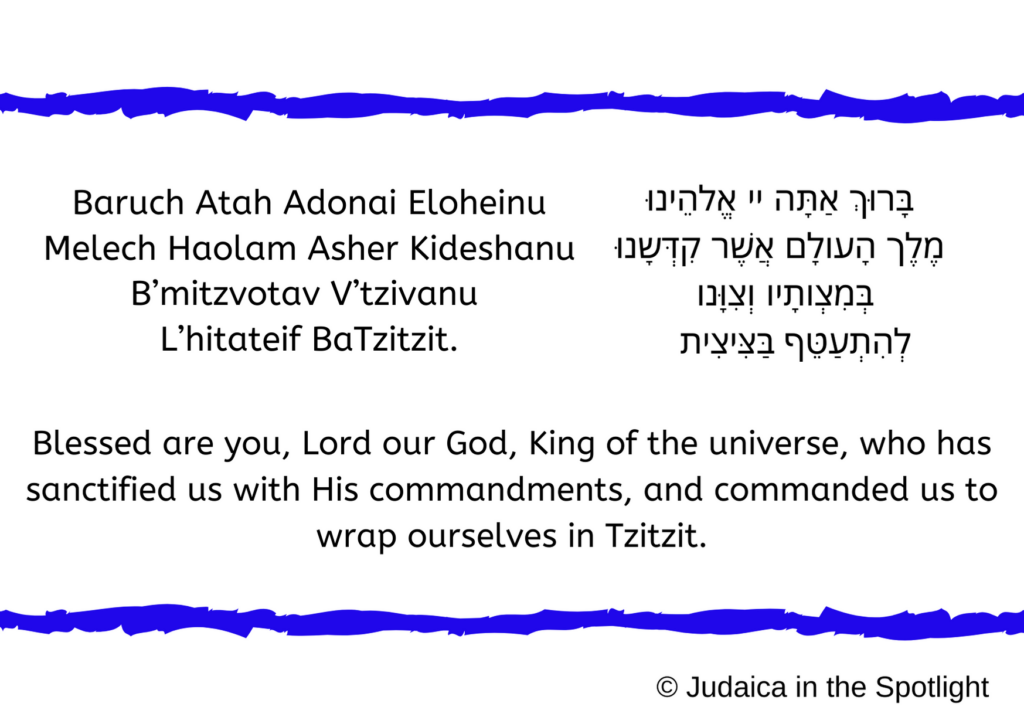
He would kiss the last letter then the first letter of the blessing that was sewn or embroidered on the Atara*, and placed the Tallit on his head. I knew it was a special time. It was the time of day he was quietly by himself, that was his time, but I know from his devotion he wasn’t there by himself. He was connecting with G-d, who at times was his best friend.
To a certain degree I took this time he prayed as something Dad did. That’s what Dad does. Now that I don’t have him, not only do I miss him, I miss seeing him perform those rituals and have a new depth of understanding him. Why do we wait so long to realize those precious moments?
Now on a lighter note, I’d like to clarify. There are two kinds of Tallitot.
Tallit Gadol (big) is a prayer shawl worn over the outer clothes during the morning prayers, Shabbat and during all prayers on Yom Kippur and other holidays. Generally, when we refer to Tallit we mean Tallit Gadol. There are many sizes anywhere from 18” X 72” to 72” X 79”
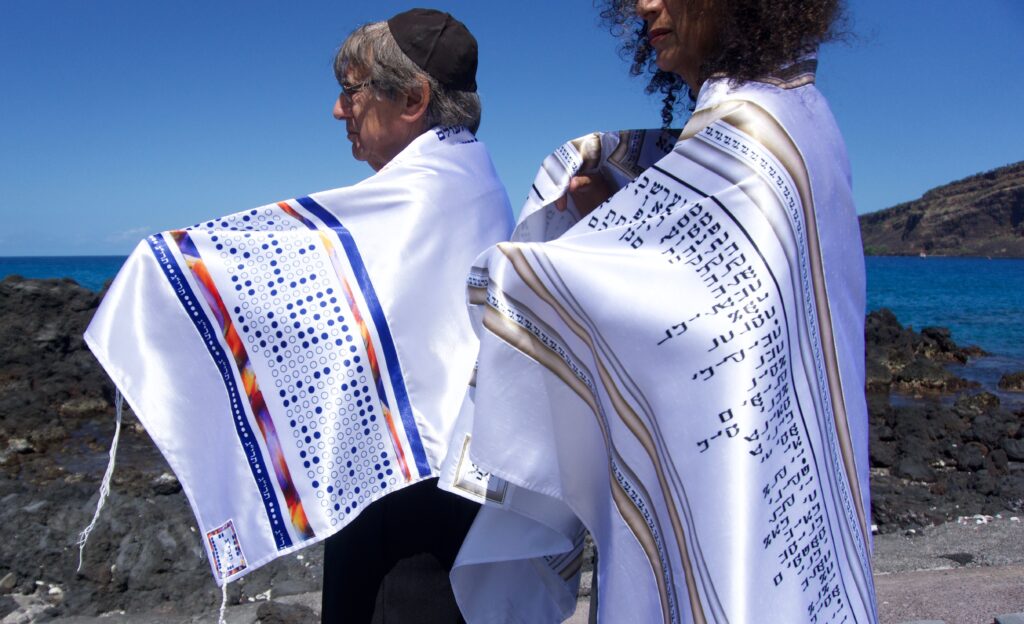
© Pardes Designs™
Tallit Gadol
613 Mitzvot Tallit worn by man
54 Portions of the Torah worn by woman
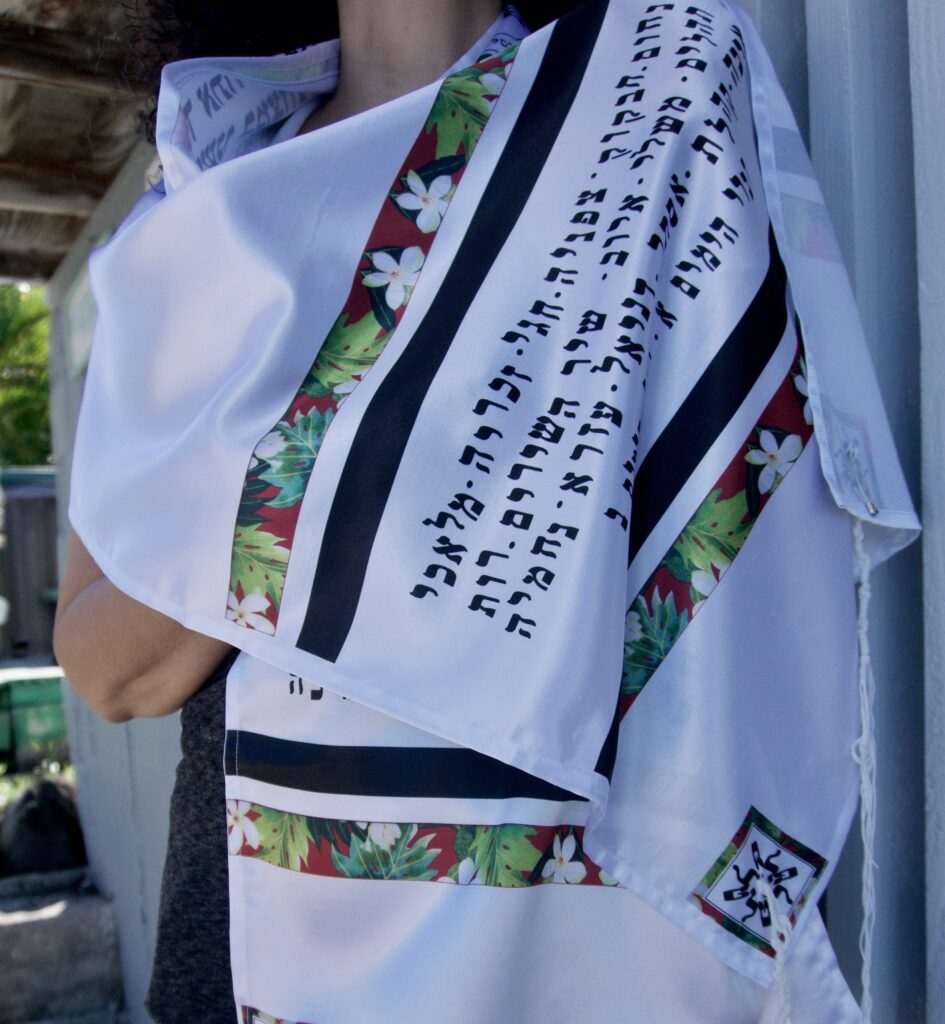
39 Names of the Bible © Pardes Designs™
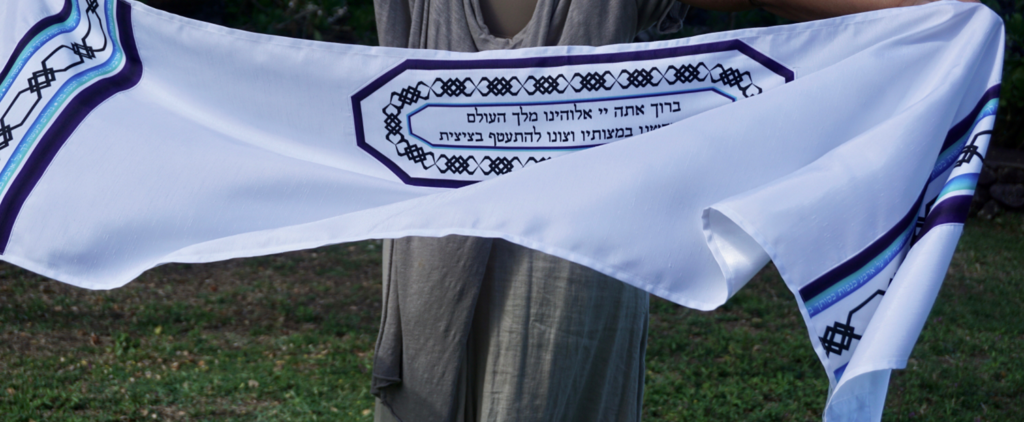
Fringes of Life © Pardes Designs™
Tallit Katan (Small) is an item that can be worn over or under clothing and commonly referred to as “Tzitzit” and is worn daily.
Tallit Katan comes in different sizes. Some boys from the age of three are already starting wearing it. It comes in many different materials: cotton, wool, silk, poly, mesh, and, my favorite one (this is where I say: cool), is the Dry-Fit t-shirt for all of us athletes.

Photo: Tallit Katan (Thin Wool) – Courtesy of Chana’s Loom

Photo: Talitnia Dry – Fit Tzitzit T- Shirt Courtesy of ajudaica.com
Every Friday from mid-morning, until a few hours before Shabbat in Israel, you will see religious Chabad people wearing Tallit Katan, setting up stands on several spots on the sidewalk of our main streets, and start giving out sets of Shabbat candles to whoever wants or needs them. At the same time they will ask men to come over and put Tefillin** and make the blessing.
I knew they were wearing it simply because I could see the four Tzitzit. The garment was worn under the shirt, but the Tzitzit were visible from the outside. Others were wearing the Tzitzit Katan on top of the clothes. And there are other men where you couldn’t tell since they didn’t show them at all.
It’s interesting why one would wear it in or out. Some wear it over their clothes so they see it and it will remind them to do the mitzvoth, while others wear the Tallit Katan under their clothes partially because it has the additional benefit of avoiding potential derision by other Jews and non-Jews.
Writing this article I realized, I took for granted that some religious people wore the Tallit Katan and some didn’t. But, I wasn’t sure if there is a mitzvah to wear the Tallit Katan?
The simple answer is wearing a Tallit Katan is not mandated in Biblical law, but in Rabbinic law the practice is strongly encouraged for men, and often considered obligatory or a binding custom.
Of course, I can go on and get you really confused. But you have read up to this point so I’ll curb my enthusiasm from doing it, and will finish my (small) Tallit Katan story with you.
I called one of the Judaica stores to purchase Tzitzit (*the Fringes on each corner of the Tallit) for my Tallitot that needed to be knotted.
“Do you sell wholesale?” I am inquiring on the phone.
“Yes, we do”. Great! (I say to myself). I explain that “I need to buy Tzizit in large quantity”. Their following question puzzled me, “Do you want Tallit or Tzizit? “Tzizit” I replied“. I specifically asked for Tzizit, why are they asking about a Tallit? I asked for fringes. I know I’m Israeli and English is my second language, but these are Hebrew words.
Assuming they understood me, they quoted me a price, as we say in Hebrew” “prices in the skies” which obviously you figured was very high.
Finally, after going back and forth the puzzle was solved.
The Tzizit is also called Tallit Katan.
Go figure. How should I have known that? Live and learn.
So, of course I purchase from them now knowing what to ask for … I will ask for Tzizit, this time making sure to add – not Tallit Katan.
* Atara– On almost any tallit there’s an Atara. The Atara is a narrow rectangle piece of fabric sewn on the tallit where the neck meets the neck. The blessing are usually sewn, embroidered or painted on the Atara.
**Tefillin (sometimes called phylacteries) are cubic black leather boxes with leather straps that Orthodox Jewish men wear on their head and their arm during weekday morning prayer. Observant Jews consider wearing Tefillin to be a very great mitzvah
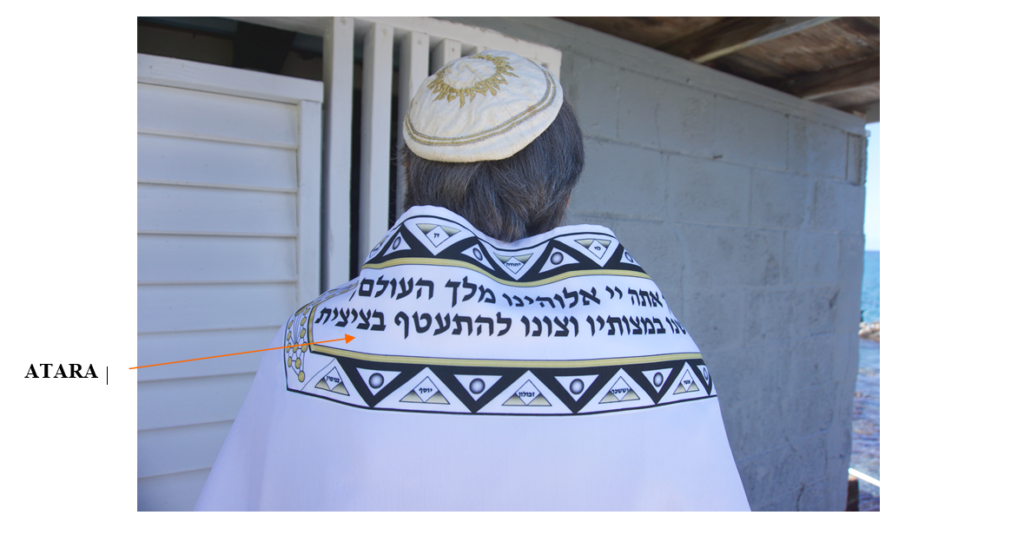
Tree of Life Tallit © Pardes Designs™
We are delighted and very grateful to Sharona Lomberg for sharing her expertise with us in the form of writing a series of guest posts for Judaica in the Spotlight about Tallitot. You can find them here.





